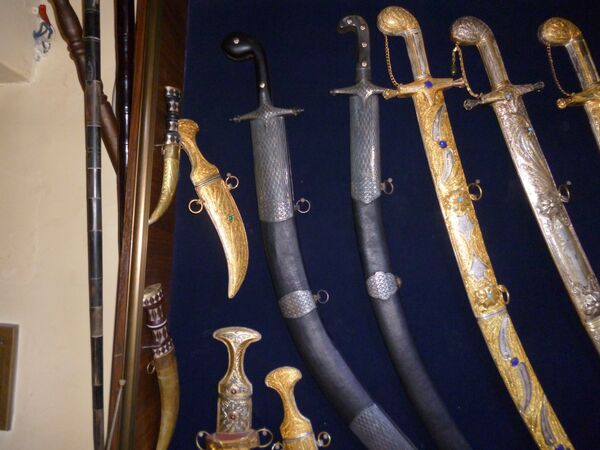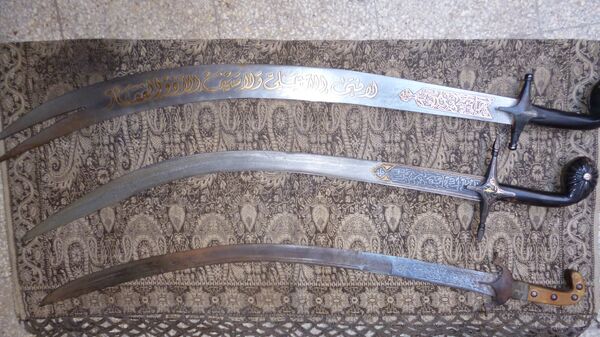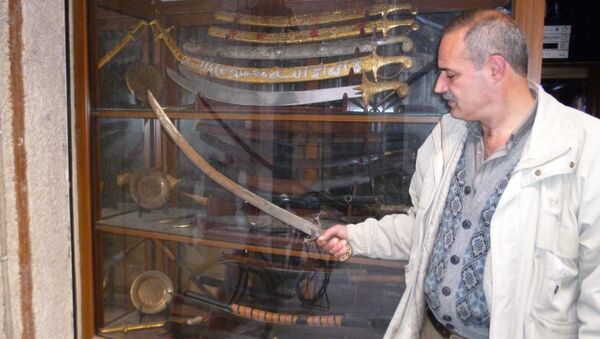According to al-Suyuf the ‘essence’ of the sword is a special drawing which is visible on the blade. It consists of lines of different sizes, shapes and colors.
These lines can form a mesh or a weave of a repeating pattern. They can move closer to each other, diverge in different directions, form a circle, rectangle or be a zigzag or parallel.
This pattern can be achieved in two ways: by exposing the sword to different temperatures during hardening or by welding different chemically composed steel plates, out of which the blade is then forged.

When using low-carbon steels with different carbon content, the color can go from gray to black. In ancient times, the composition of the metal was somewhat different; it was made of volcanic rock from the province of al-Suwayda.
According to al-Suyufi such patterns can also be seen on the Iranian blades. The most well-known is the Kirk Narduban which has 40 versions. Another pattern is called the Kara-Khorasan, which includes thin gray or black lines resembling a fish net lying on the water’s surface.
According to al-Suyufi the Damascus sword has a very sharp blade. The handle is made of bone, ivory or buffalo rock.
The handle must be made of natural materials so that it can absorb sweat to prevent the sword from slipping out of one’s hands during a fight.

The shield which is used to protect the hands is made from either iron or copper. The length of the classical Damascus sword ranges from 85 to 90 cm, and has a width from 2 to 4 cm.
The sheath of a Syrian sword is made of wood whereas the outside layer is made of leather, fabric, silver or steel. The notches are made of gold and the sword weighs about 3 kg.
The brother of Abdul Qadir al-Suyufi, Fayad al-Suyufi, has also inherited the metalworking skill from his grandparents. He said that the Damascus blade was the most effective weapon during the Bronze weapons era and it easily destroyed the weapons of its opponents.
Each ruler wanted to ensure that his army also had such an indestructible weapon. Hence, in the early 15th century, when Tamerlane conquered Damascus, he took with him 150,000 crafts workers to Samarkand. After 100 years, the Ottoman Sultan Selim I did the same thing.
Subsequently, in Damascus, the skill of forging weapons underwent difficult times while in Samarkand, Khorasan and Turkey it actively developed.
In an interview with Sputnik, Qadir al-Suyufi blames the terrorists for using the swords to kill their victims. According to him it distorts Islam, as in the monotheistic religions there is no punishment by death.
Right now blacksmiths are going through tough times because people are not willing to spend money on their swords and there are no tourists.
The price for an old sword is 100 thousand Syrian pounds (SYP) which is about $467. The price of a new sword ranges from 5 to 25 thousand SYP which is $23 to $116.
However, despite the difficult times the brothers aren’t losing hope. They believe that life in their country will improve and the swords will be back in business because it has and always will be a part of Syria’s cultural heritage.





